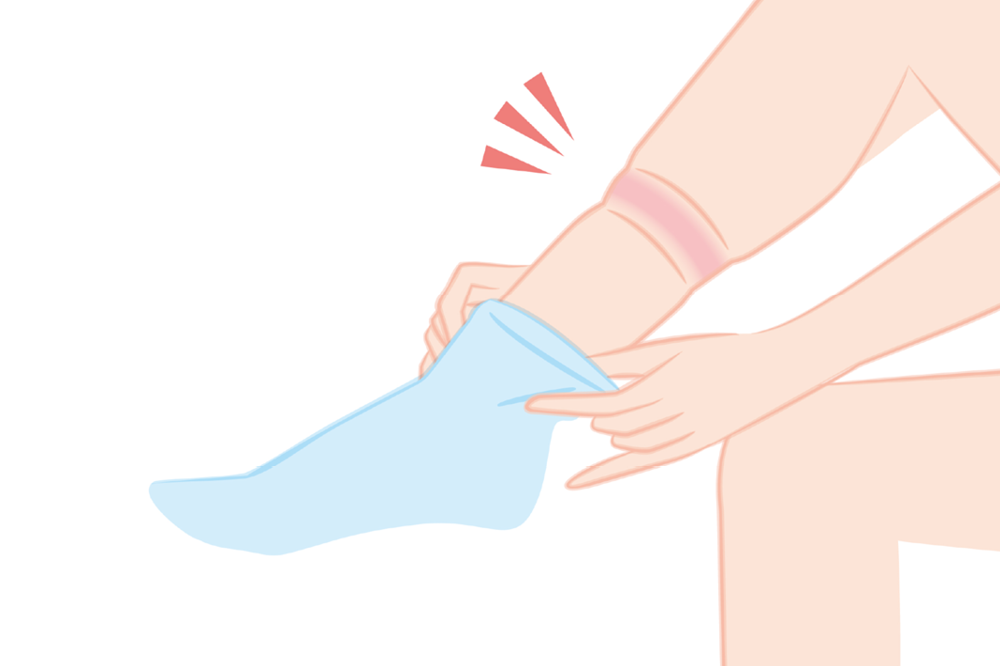Sock-line hyperpigmentation (sock line bands) is a condition caused by socks that are too tight or have constrictive elastic bands. The condition is often found in infancy, when baby socks restrict blood circulation.
Symptoms
Sock-line hyperpigmentation shows itself via thin, raised lesions, marks or rings around a person's ankles or calves. The marks are usually red and oftentimes look like burns. According to the British Journal of Dermatology, the hyperpigmentation (which is when the skin becomes darker than the surrounding skin) may fade over time, but it usually causes permanent scarring.
Causes

Sock-line hyperpigmentation is caused by socks or trousers that are too tight on an adult or baby's lower legs and ankles. The tightness, especially from elastic bands, causes inflammation in the dermis (lower layer of skin) or in the subcutaneous fat. The hyperpigmentation can appear after just a couple of hours of a person or an infant wearing socks that are too tight.
Sock-line hyperpigmentation is different from amniotic band syndrome, which develops in the womb and can cause similar symptoms in newborn babies.
Treatment and Prevention
Unfortunately, though it is a harmless condition, sock-line hyperpigmentation is a permanent condition that usually causes scarring. If you or your baby’s skin shows chaffing or other signs of irritation from socks or pants, you may want to apply a topical antibacterial ointment or spray such as Dermatol. However, check with your child’s doctor or pediatrician before applying medication to his or her skin.
Preventing sock-line hyperpigmentation is as simple as making sure your and/or your infant’s socks and pants aren’t too tight. Try choosing socks and pants made out of soft, natural material that do not contain restricting elastic or rubber bands. When trying new socks or pants, always place a finger between your baby’s skin and the band of the sock or pants to make sure the items aren’t too tight.


